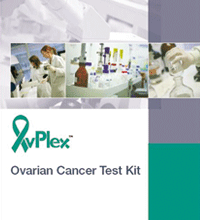
Ovplex by Healthlinx wins BioSpectrum Asia Pacific Product of the Year Award for 2010
There is no reliable diagnostic blood test for ovarian cancer. The current market gold standard, CA125, is used as an aid in the diagnosis of ovarian cancer, monitoring treatment efficacy and the detection of disease recurrence. CA125, however, does not display adequate sensitivity or specificity as a primary diagnostic for ovarian cancer at any stage of disease progression. Hence, most women are diagnosed with ovarian cancer when it is too late to be treated, reducing the probable survival rates.
Considering this unmet medical need, a team of scientists at HealthLinx, an emerging biomarker and diagnostic company with an integrated platform in biomarker and bioactive peptide discovery platforms from Australia developed and launched diagnostic test called OvPlex, which is a superior performing alternative to CA125, for the diagnostic process to identify ovarian cancer in symptomatic women.
The product won the BioSpectrum Asia Pacific Bioscience Industry Product of the Year Award for 2010.
"The reason ovarian cancer is the most lethal of the reproductive tract cancers is that 75 percent of women with ovarian cancer are not diagnosed until late stage disease. Their chances of surviving five years are probably only 20-30 percent. If the disease is diagnosed at an early stage, when it is contained within the ovaries, the chance of surviving five years rises to 80 percent. That is why it is so important to try and develop better tests for diagnosing ovarian cancer, particularly early stage disease. That is where we can make a difference and save lives," observes Prof. Greg Rice, Chairman of HealthLinx, Australia.
Worldwide 230,000 new cases of ovarian cancer are diagnosed annually with more than 142,000 disease fatalities. Ovarian cancer at its early stages (I/II) is difficult to diagnose until it spreads and advances to later stages (III/IV). This is because most symptoms are non-specific and thus of little use in diagnosis.
While launching the diagnostic kit, Mr Nick Gatsios, Managing Director of HealthLinx, says "This is a medical milestone in women's health. Most importantly, we believe this test could lead to many hundreds of lives being saved in Australia and world over."
OvPlex is a diagnostic test that measures the levels of five proteins in a patient's blood. One of the proteins is CA125, which has been used for several years for the detection and monitoring of ovarian cancer. When measured along with the four additional proteins that make up OvPlex, a significant enhancement in diagnostic performance can be achieved.
OvPlex uses the minimally invasive methodology of a simple blood test. Performance of the OvPlex multimarker test is based on retrospective biomarker trial of 362 samples consisting of 150 patients with confirmed ovarian cancer and 212 patients were free of disease. Based on the analysis of receiver operator characteristic (ROC) curves, OvPlex significantly out performs the CA125 blood test, for both early and late stage disease.
For the detection of ovarian cancer, OvPlex delivers 94 percent specificity, 94 percent sensitivity and an overall diagnostic efficiency of 94 percent when used at a threshold of 0.45. OvPlex reduces the overall false negative rate by up to 19 percent and the false positive rate by 42 percent when compared with using CA125 alone. For the detection of early stage (stages I and II) disease, the OvPlex multimarker test also outperformed the use of CA125 alone, delivering 92 percent sensitivity and 94 percent specificity in the biomarker trial. The enhanced performance of OvPlex, particularly with respect to detection of early stage ovarian cancers suggests that it will provide significant benefits in terms of diagnostic performance over the use of CA125 alone.
Over the last few years, a small group of 6-8 scientists at HealthLinx have formed the core development team involved in bringing the OvPlex diagnostic to fruition. The laboratory development has involved input from scientific research staff with broad expertise in the areas of protein purification, analysis and characterization, mass spectrometry and immunoassay development. These laboratory skills, coupled with the ongoing advice and support from the clinical and academic advisors, have supported the successful development of the OvPlex product.
Commenting on developing such a unique product, Mr Gatsios, says, "We have invested approximately 70 percent of our funding over the past few years, for evaluating the novel biomarkers AGR2 and HTX010. I am proud of our research team as OvPlex was the result of work done by HealthLinx staff. During the development of the OvPlex panel HealthLinx entered into collaboration to access clinical samples with a number of medical institutions in Australia."
The development path has also led to the implementation of the current multi-marker composition that was shown to provide the best combination for outperforming CA125 for the detection of all ovarian cancers as well as early stage ovarian cancer in the recent phase II biomarker trial. The research and development team continues to characterize and test other potentially useful biomarkers with the aim of further refining the sensitivity and specificity of the OvPlex product.




